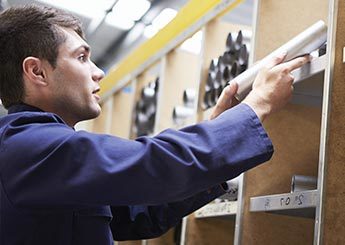Keep young workers safe
Inexperience and communication issues may put them at risk

Key points
- Factors that increase young workers’ injury risks include inexperience with the working environment as well as inadequate training in the types of industries in which most young workers find employment.
- Safety pros and supervisors must ensure young workers feel comfortable speaking up if they feel unsafe performing a work task, experts recommend.
- Experts suggest that safety pros and supervisors invite young workers’ input so they feel empowered and develop critical-thinking skills.
Many U.S. teens enter the workforce to make money and get a head start on their careers. However, in addition to being inexperienced and unfamiliar with work processes, teens and young workers face a higher risk of being injured on the job.
The Georgia Tech Research Institute’s Center for Young Worker Safety and Health states that workers 15 to 24 years old – who represent 14 percent of the total U.S. labor force – are twice as likely as their older co-workers to end up in an emergency department for a workplace injury.
Additionally, 70 teens are killed on the job every year in the United States, and about 200,000 are injured, according to the National Young Worker Safety Resource Center. The center is a collaboration between the University of California, Berkeley, and the Education Development Center Inc., a nonprofit organization based in Waltham, MA.
What makes the workplace more dangerous for young workers, and what can safety professionals do to help?
Factors affecting young workers’ safety
Young workers are at different stages of physical and cognitive development than adult workers, according to OSHA. For younger teens in particular, these factors can affect the availability and fit of personal protective equipment and may put them at a disadvantage for safely completing tasks involving strength or motor control.
Teens’ level of maturity also may influence their safety in the workplace, said Gary K. Pechie, director of the Wage and Workplace Standards Division of the Connecticut Department of Labor. Although it is not the case for all teens, many feel “invincible” at this stage in life and may skip necessary precautions before completing a safety-sensitive task, Pechie said. Both teens and young adults may not have enough work and safety experience to recognize the seriousness of common hazards, such as tripping hazards or slippery floors, he added.
If a temporary worker is injured on the job, who is responsible for recording that injury – the staffing firm or the host employer?
Peer-to-peer training can help teach teens about hazards on the job, including workplace violence, OSHA administrator David Michaels announced during a June 24 press event.
OSHA has provided a safety training grant for Teens Lead @ Work, a national network of peer education programs founded by four state occupational safety coalitions and the University of California, Berkeley. The program trains teens to educate their peers and co-workers on how to recognize and prevent workplace violence.
Go to masscosh.org for more information.
The types of employment that young workers are able to find can have an effect on safety. Many teens work in low-wage jobs – such as retail, hospitality and food service – that have less training because they are high-turnover positions, said Diane Bush, program coordinator for the Labor Occupational Health Program at the University of California, Berkeley. According to the Georgia Tech Research Institute’s Center for Young Worker Safety and Health, other common industries for young workers are construction, agriculture, mining and transportation – some of the industries with the highest injury rates for any age.
Another common type of business in which young workers are employed is a family business, Pechie said. Most non-agriculture family businesses must still follow all applicable child labor laws, however, and ensure young family members are properly trained, he warned.
“A young worker is not any safer if they are the son or daughter of the owner,” he said.
Many of the child labor laws that protect younger teens – such as work-hour limits and restrictions on what tasks they can perform – no longer apply once they reach age 18. In most of the country, that means an 18-year-old can use powered cutting equipment such as circular saws and meat slicers; work in an environment with possible exposures to radioactive and hazardous substances; operate forklifts or wrecking balls; and work as a logger or at a sawmill.
Child labor laws
For more on federal and state child labor laws, go to DOL.gov.
Post a comment to this article
Safety+Health welcomes comments that promote respectful dialogue. Please stay on topic. Comments that contain personal attacks, profanity or abusive language – or those aggressively promoting products or services – will be removed. We reserve the right to determine which comments violate our comment policy. (Anonymous comments are welcome; merely skip the “name” field in the comment box. An email address is required but will not be included with your comment.)

